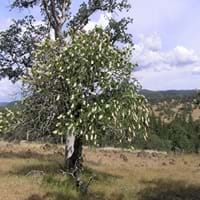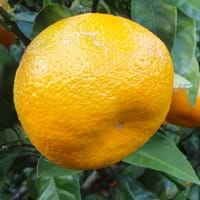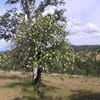Life Span
Perennial
Annual
Origin
California
China, Japan
Types
Not Available
Not available
Habitat
Hillside
Subtropical climates
USDA Hardiness Zone
7-9
8-11
Sunset Zone
3a, 3b, 4, 5, 6, 7, 8, 9, 10, 14, 15, 16, 17, 18, 19, 20, 21, 22, 23, 24
H1, H2, 8, 9, 12, 13, 14, 15, 16, 17, 18, 19, 20, 21, 22, 23, 24
Habit
Oval or Rounded
Spreading
Flower Color
White, Pink
White
Flower Color Modifier
Bicolor
Bicolor
Fruit Color
Yellow Brown
Green, Orange, Orange Red
Leaf Color in Spring
Light Green
Green, Dark Green
Leaf Color in Summer
Green
Green, Dark Green
Leaf Color in Fall
Not Available
Green, Dark Green
Leaf Color in Winter
Not Available
Light Green
Plant Season
Spring, Summer, Fall, Winter
Spring, Summer, Fall, Winter
Sunlight
Full Sun, Partial Sun
Full Sun, Partial Sun
Growth Rate
Medium
Medium
Type of Soil
Clay, Loam, Sand
Loam, Sand
The pH of Soil
Acidic, Neutral
Acidic, Neutral, Alkaline
Soil Drainage
Well drained
Well drained
Bloom Time
Late Spring, Early Summer
Early Spring, Spring, Late Winter
Tolerances
Drought, Salt
Drought
Where to Plant?
Ground
Ground, Pot
How to Plant?
Seedlings
Budding, Grafting, Seedlings
Plant Maintenance
Medium
Medium
Watering Requirements
Keep the ground moist but not water-logged, Requires regular watering, Requires watering in the growing season
Keep the ground moist but not water-logged, Medium
In Summer
Lots of watering
Lots of watering
In Spring
Moderate
Moderate
In Winter
Average Water
Average Water
Soil pH
Acidic, Neutral
Acidic, Neutral, Alkaline
Soil Type
Clay, Loam, Sand
Loam, Sand
Soil Drainage Capacity
Well drained
Well drained
Sun Exposure
Full Sun, Partial Sun
Full Sun, Partial Sun
Pruning
Remove damaged leaves, Remove dead leaves, Remove dead or diseased plant parts
Remove branches, Remove damaged leaves, Remove dead branches, Remove dead leaves
Fertilizers
All-Purpose Liquid Fertilizer
Apply N-P-K, Fertilize the first year
Pests and Diseases
Red blotch
Anthracnose, Aphids, Black root rot, Brown Rot, Mushroom root rot
Plant Tolerance
Drought
Drought
Flower Petal Number
Not Available
Single
Fragrant Bark/Stem
No
Yes
Foliage Texture
Medium
Medium
Foliage Sheen
Glossy
Glossy
Attracts
Birds, Butterflies
Birds, Butterflies
Allergy
Not Available
Not Available
Aesthetic Uses
Beautification, Landscape Designing, Showy Purposes
Showy Purposes
Beauty Benefits
Not Available
Good for skin and hair
Environmental Uses
Air purification
Agroforestry, Food for birds
Medicinal Uses
Not Available
Bone strength, Kidney Stones, osteoporosis, Stomach Cancer, Vitamin C
Part of Plant Used
Fruits
Fruits
Other Uses
Decoration Purposes, Showy Purposes, Used as Ornamental plant
Food for animals, Used as a nutritious food item, Used As Food, Used as Ornamental plant
Used As Indoor Plant
No
No
Used As Outdoor Plant
Yes
Yes
Garden Design
Dried Flower, Everlasting, Feature Plant, Hedges, Mixed Border, Screening, Wind Break
Container, Edible, Feature Plant, Fruit / Fruit Tree, Hedges, Screening / Wind Break, Topiary / Bonsai / Espalier
Botanical Name
AESCULUS californica
CITRUS unshiu
Common Name
California Buckeye
Satsuma, unshu mikan, cold hardy mandarin
In Hindi
कैलिफोर्निया Buckeye
satsuma
In German
California Buckeye
satsuma
In French
California Buckeye
satsuma
In Spanish
California Buckeye
satsuma
In Greek
Καλιφόρνια Buckeye
satsuma
In Portuguese
California Buckeye
satsuma
In Polish
Kalifornia Buckeye
Satsuma
In Latin
California Buckeye
Satsuma
Phylum
Magnoliophyta
Magnoliophyta
Class
Magnoliopsida
Magnoliopsida
Order
Sapindales
Sapindales
Family
Sapindaceae
Rutaceae
Clade
Angiosperms, Eudicots, Rosids
Angiosperms, Eudicots, Rosids
Tribe
Not Available
Citreae
Subfamily
Hippocastanoideae
Citroideae
Season and Care of California Buckeye and Satsuma
Season and care of California Buckeye and Satsuma is important to know. While considering everything about California Buckeye and Satsuma Care, growing season is an essential factor. California Buckeye season is Spring, Summer, Fall and Winter and Satsuma season is Spring, Summer, Fall and Winter. The type of soil for California Buckeye is Clay, Loam, Sand and for Satsuma is Loam, Sand while the PH of soil for California Buckeye is Acidic, Neutral and for Satsuma is Acidic, Neutral, Alkaline.
California Buckeye and Satsuma Physical Information
California Buckeye and Satsuma physical information is very important for comparison. California Buckeye height is 460.00 cm and width 460.00 cm whereas Satsuma height is 300.00 cm and width 180.00 cm. The color specification of California Buckeye and Satsuma are as follows:
California Buckeye flower color: White and Pink
California Buckeye leaf color: Light Green
Satsuma flower color: White
- Satsuma leaf color: Green and Dark Green
Care of California Buckeye and Satsuma
Care of California Buckeye and Satsuma include pruning, fertilizers, watering etc. California Buckeye pruning is done Remove damaged leaves, Remove dead leaves and Remove dead or diseased plant parts and Satsuma pruning is done Remove branches, Remove damaged leaves, Remove dead branches and Remove dead leaves. In summer California Buckeye needs Lots of watering and in winter, it needs Average Water. Whereas, in summer Satsuma needs Lots of watering and in winter, it needs Average Water.





